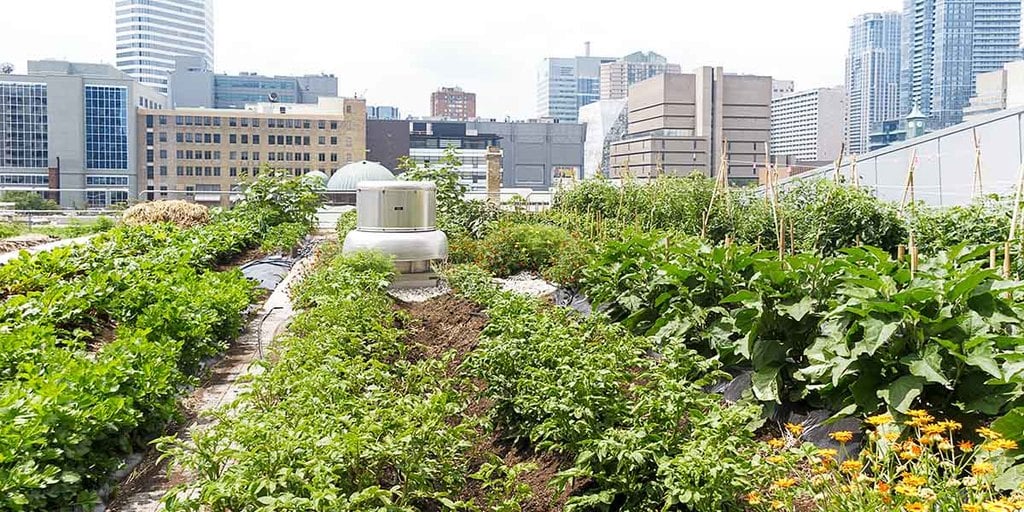The Only Guide to City Blooming
Table of ContentsNot known Factual Statements About City Blooming The City Blooming IdeasThe Buzz on City BloomingCity Blooming for BeginnersCity Blooming for Beginners
Intrigued in growing food for sale in the City of Chicago? Below is a checklist of often asked questions regarding the guidelines and regulations that cultivators must think about when intending a city agriculture project.
The zoning change does not customize any various other codes handling composting, structure permits, acquiring or renting City had building, company licenses or environmental contamination. There are existing codes that control these issues and they stay in complete effect and might be appropriate to your task. Community gardens are normally possessed or managed by public entities, civic organizations or community-based companies and maintained by volunteers.
Urban ranches expand food that is intended to be offered, either on a nonprofit or for-profit basis. Due to their commercial purpose, metropolitan ranches call for a service certificate.
Things about City Blooming
Composting is permitted however only for plant product that is produced and made use of on website. The quantity of compost product can not exceed 25 cubic backyards at any kind of given time according to the criteria in 7-28-715 of the City's Municipal Code. Yes. Due to the fact that the dirt at the majority of brand-new garden websites needs amending, compost, dirt, timber chips, or various other materials can be gotten to create or improve the growing space - City gardening.

If a building authorization is needed then the hoophouse will certainly be taken into consideration an accessory structure. You can figure out more concerning the building authorization demands by calling the Division of Structures. The 25,000-square-foot dimension restriction is planned to stop a single community yard from dominating an offered block or diminishing the block's existing residential or commercial personality.
The limitation does not apply to gardens situated in Public Open Area (POS) districts. Can there be even more than one area yard that is 25,000 square feet on a solitary block? Fencing is not called for, however, yards that have huge auto parking areas may be required to set up secure fencing or other landscape design attributes.
Not known Facts About City Blooming
B1 & B2 districts need that all commercial use activities be carried out inside your home. R areas limit business task. The regulations reflect the function and intent of the Zoning Code. Is secure fencing needed for city ranches? Yes. Fences might be needed, together with landscape design and testing, for certain auto parking areas and outside work or storage areas depending on location and the details task taking place.
Urban ranches call for building licenses and zoning approvals prior to building and construction (landscaping). Other forms of city testimonial might be needed depending on specific frameworks, tasks, size, landscape design, licensing, public health and stormwater administration issues.
The Division of Company Matters and Consumer Security can help determine the details type of service license that's needed. Off road car park is required for many commercial projects in Chicago. The called for number of vehicle parking areas is based on the number of staff members functioning on site and not the square video footage of the expanding room.
6 Easy Facts About City Blooming Explained

Yes. A city ranch can market compost material produced on site, nonetheless, the procedure must follow the policies in 7-28-715 of the Chicago Municipal Code. Yes. Aquaponic systems are allowed inside your home on city ranches in many zoning areas. A zoning review and structure authorization is called for in order to install structures or systems and an organization certificate is required as explained above.
As much as 5 hives or swarms of honey may be kept as an accessory usage. However, beekeepers should sign up with the Illinois Department of Farming. For more details concerning the proposed zoning amendment you might call the Division of Housing and Economic Development, Bureau of Preparation and Zoning at 312.744.8563.
Farming in cities and city areas An urban ranch in Chicago. Urban farming refers to numerous practices of cultivating. https://www.tumblr.com/cityblooming1/754396373643853824/welcome-to-our-website-city-blooming-is-all-about?source=share, processing, and dispersing food in metropolitan locations. The term also uses to the location activities of pet husbandry, tank farming, beekeeping, and cultivation in an urban context. Urban agriculture is differentiated from peri-urban agriculture, which takes place in country locations see post at the side of residential areas.
More About City Blooming
It can include a motion of natural farmers, "foodies" and "locavores", who look for to create socials media based on a shared ethos of nature and area holism. These networks can establish using formal institutional assistance, ending up being integrated into neighborhood community planning as a "change town" activity for lasting metropolitan advancement.
The more direct access to fresh vegetable, fruit, and meat items that might be realised via metropolitan agriculture can improve food safety and food safety and security while decreasing food miles, resulting in lower greenhouse gas discharges, thereby adding to climate modification reduction. Several of the initial proof of urban farming comes from Mesopotamia.